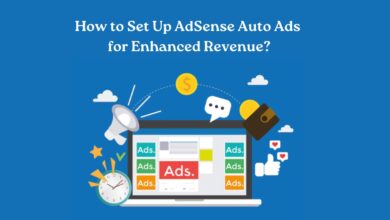AdSense for Mobile: Optimizing Ads for Mobile Users

A crucial part of mobile optimization involves ensuring ads are responsive and compatible with diverse screen sizes and devices. AdSense for Mobile allows businesses to tap into this vast audience, ensuring their ads are prominently displayed on mobile devices. Advertisers are compelled to employ responsive design principles to ensure seamless adaptation across various mobile platforms.
Advantages of AdSense for Mobile:
1. Expanded Reach:
With the surge in global smartphone users, mobile advertising offers a prime chance to broaden ad reach. AdSense for Mobile enables businesses to reach this extensive audience, ensuring visibility of their ads on mobile devices.
2. Enhanced User Experience:
Mobile-optimized ads seamlessly integrate into users’ mobile browsing, being responsive and visually captivating. This fosters a positive user experience and boosts engagement rates.
3. Targeted Advertising:
AdSense for Mobile provides sophisticated targeting, enabling advertisers to reach their desired audience by considering demographics, interests, and browsing behavior. This targeted approach boosts ad relevance, increasing conversion potential..
4. Monetization Opportunities:
AdSense for Mobile offers publishers a lucrative opportunity to monetize their mobile traffic by displaying mobile-friendly ads. This helps them generate revenue and maximize earnings from their websites or apps.
Optimizing Ads for Mobile Users:
1. Responsive Design:
Key to mobile optimization is ensuring ads are responsive across devices. Advertisers must create ads using responsive design principles to ensure seamless adaptation to different mobile platforms.
2. Streamlined Ad Formats:
Mobile users have limited screen space, so it’s essential to use ad formats that are concise and visually appealing. Formats such as native ads, interstitials, and in-feed ads work well on mobile devices and blend seamlessly with the content.
3. Page Load Speed:
Slow-loading ads can frustrate mobile users and lead to higher bounce rates. To optimize for mobile, advertisers should prioritize page load speed by optimizing images, minimizing redirects, and leveraging caching techniques.
4. A/B Testing: A/B Testing:
Experimenting with diverse ad creatives, formats, and placements is crucial for enhancing ad performance on mobile devices. Conducting A/B tests allows advertisers to identify which strategies resonate best with their mobile audience and refine their campaigns accordingly.
Common Problems During Optimization:
1. Ad Discrepancies:
Sometimes, ads may appear differently across various devices and screen sizes, leading to inconsistencies in appearance and performance.
2. Click Fraud:
Mobile devices are more susceptible to click fraud, where fraudulent clicks artificially inflate ad engagement metrics. Advertisers should monitor for suspicious activity and implement measures to mitigate click fraud risks.
3. Cross-Device Tracking:
Tracking user behavior across multiple devices can be challenging, making it difficult to attribute conversions accurately. Advertisers should leverage cross-device tracking solutions to gain insights into the customer journey across different devices.
Conclusion
AdSense for Mobile offers numerous advantages for advertisers and publishers. By implementing responsive design, concise ad formats, and A/B testing, businesses can enhance the effectiveness of their mobile advertising. However, they must also address challenges such as ad discrepancies, click fraud, and cross-device tracking to ensure success.
Check www.intogeeks.com to know more about AdSense for Mobile.




